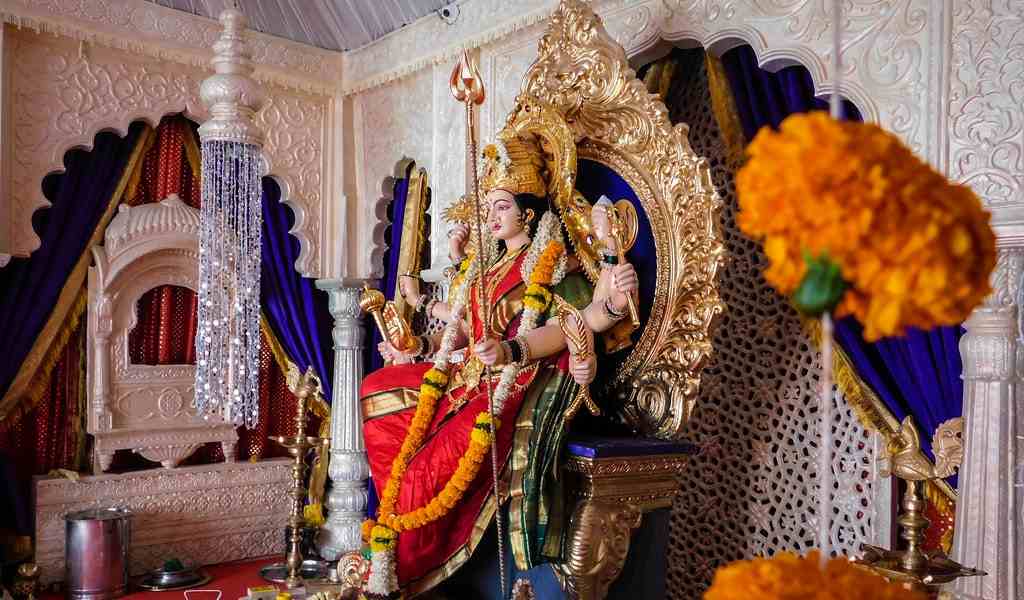For every Bengali around the world, Durga puja Silchar, the autumnal festival marks the time of happy tides. The Durga puja is particularly popular and traditionally celebrated in the Indian states of West Bengal, Assam, and Tripura. More and more, updates from Silchar, west Bengal and Tripura, will be coming forth at the month of Durga puja is coming near.
For every Bengali across the world, Durga puja is not just a festival but rather an emotion. On the other side, The rest of India observes Navaratri, the nine holy nights and days of restraints, fasting’s, and vegetarianism.
While the rest of the world may say that Durga Puja begins from Panchami or Sasthi but every Bengali soul knows that starting from Mahalaya the puja has already begun. It is said that Mahalaya is the day when the Goddes Durga Defeated the demon named Mahishsura. The day signifies the end of Pritu Paksha Shradh and the beginning of Durga Puja for the Bengalis.
Celebration of Durga has its unique rituals
For Bengalis, the celebration of Durga has its unique rituals. A week before the Navratri begins, the idols of goddess Durga are being painted and made ready except her eyes. On the occasion of Mahalaya, the goddess Durga is invited on earth with rituals, and the eyes are drawn on the idol in an auspicious ritual called chokku Dan.
Bengali celebrate Durga puja on the sixth day of Navaratri that is the first day of Durga puja, beautifully decorated the idols bought home and placed the idol magnificently as decorated public pandal. During the puja, families immerse themselves in these five days of pandal hopping, awesome food, music, and cultural evening.
Durga puja festival marks the victory of goddess
So, As per the Hindu scriptures. Durga puja festival marks the victory of goddess Durga in her battle against the Asura, Mahishasura. This festival marked the victory of goddess Durga over evil, though it is also an in part a harvest festival celebrating the goddess as the motherly power behind all of life and creation.
Durga puja is celebrated every year in the Hindu months of Ashwin (September – October).
However, In the recorded history it is said that the first grand worship of the goddess Durga is celebrated in the late 1500s. Folklores say the landlords or zamindars of Dinajpur and Malda initiated the first Durga Puja in Bengal. It is said that Raja kangshanarayan of Teherpur or Bhabananda Mazumdar of Nadiya organized the first sharadiya or Autumn Durga Puja in Bengal in 1606.
The origin of the community puja can be credited to the twelve friends of Guptipara in Hoogly, West Bengal. Who collaborated and collected contributions from the local residents to conduct the first community puja called the Baro-yaari puja or the twelve pal puja in 1790. The Baro-yaari puja was brought to Kolkata in 1832 by Raja Harinath of cossimbazar, who performed the Durga Puja at his ancestral home in Murshidabad from 1824 to 1831.
Celebration of Durga puja | Bengali Culture
Historically, in the 17th and the 18th centuries, the Nawab of Bengal broke the ties with the Mughal rulers , a class of Hindu zamindars arose in the region. This class of Hindu landowners became little rajas in their own right controlling the vast territories and exercising a huge amount of control over their subjects. The local authority was not always rewarded with adequate political power which still lay in the hands of the Nawab.
After the year 1757, when the English won the Battle of Plassey and took control over the Bengal, the political affiliation of the zamindars underwent a further shift noted by historian Tithi Bhattacharya, in this milieu of shifting and fluid political affiliations, there was perhaps a need for the zamindars to assert and display political authority, financial stability and administrative control over the ruled. The ostentatious celebration of Durga puja has helped the zamindars in asserting their influence in an era of drastic political and social change in Bengal.
Final Thoughts:
However, it is the busiest time of the year at the Bengali Durga puja organizing committees in the city. During the time of puja, “The Bengali has a special bond with this festival, it is the main time, where the bongs go back to their roots and celebrate the puja with traditional fervour.”
On the last day of Durga puja that is the tenth day which is also called Dashami, it is believed the Goddes Durga gained victory over the evil and restored balance on the earth. It is also known as Vijayadashami. On this day, women, especially married women celebrate Vijayadashami at the pandals by applying sindoor to goddess Durga’s face and play ‘sindoor Khela’. Sindoor Khela literally means the vermillion game which is celebrated by Bengali Hindu women by applying sindoor to each other.
















